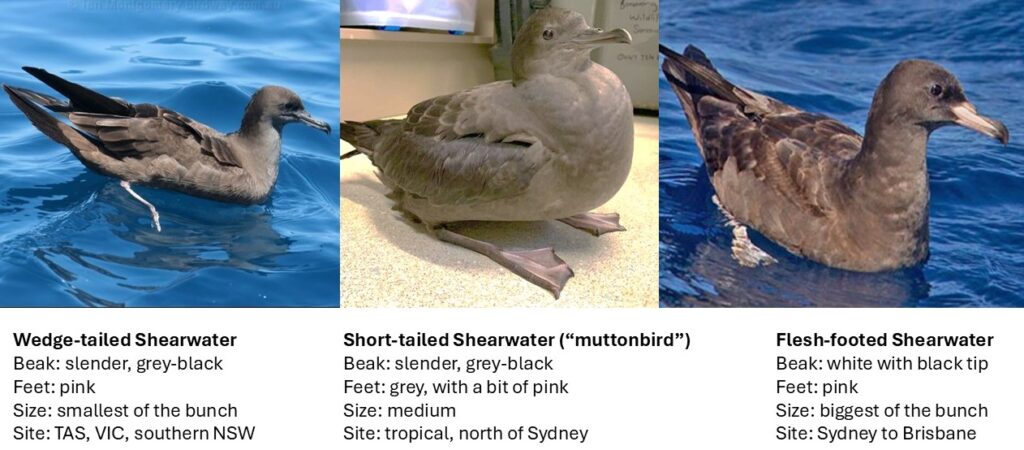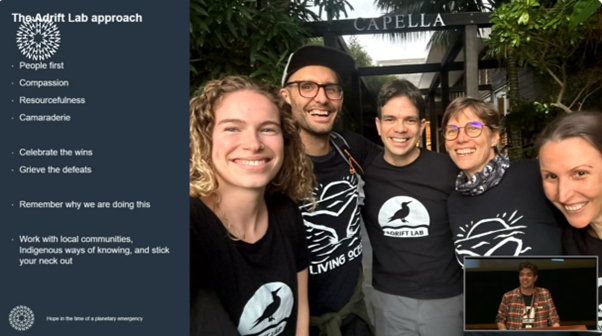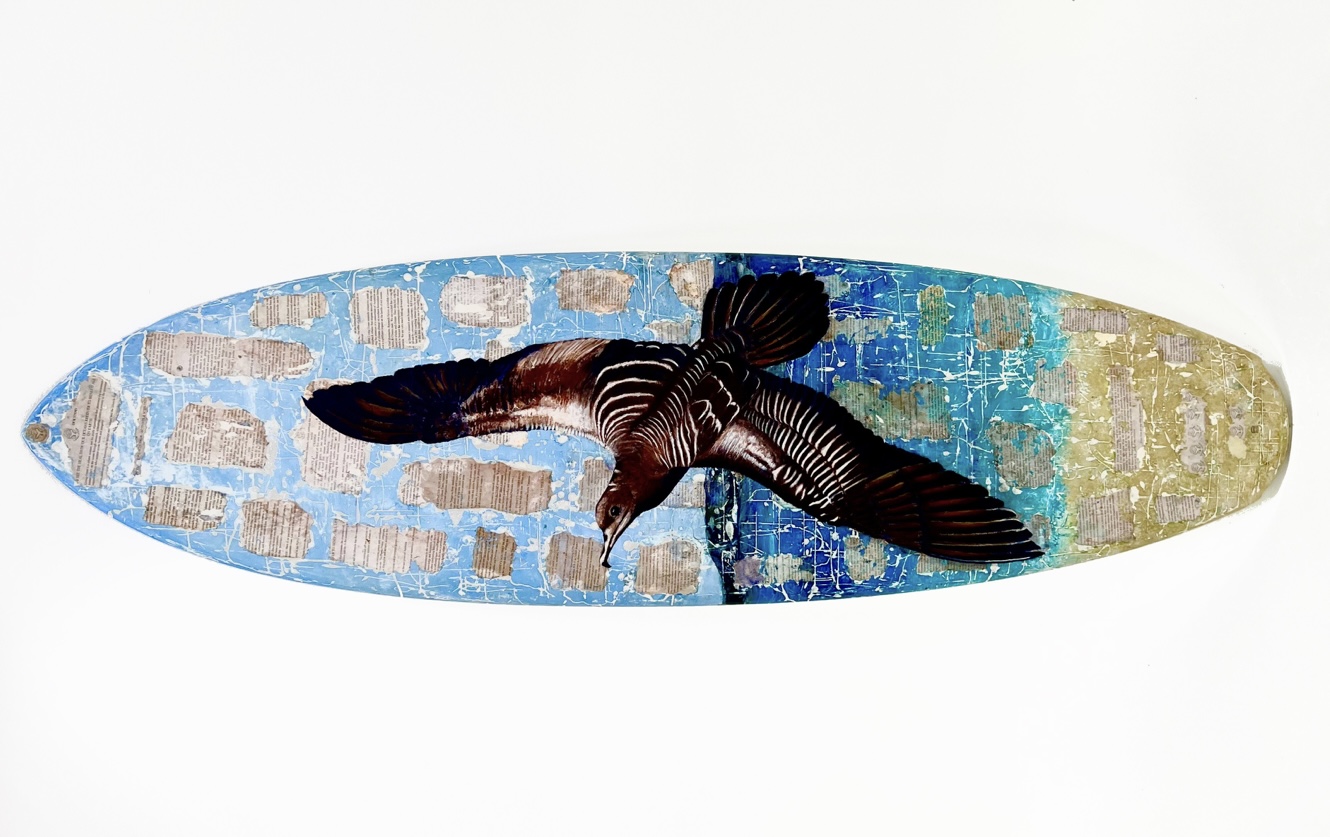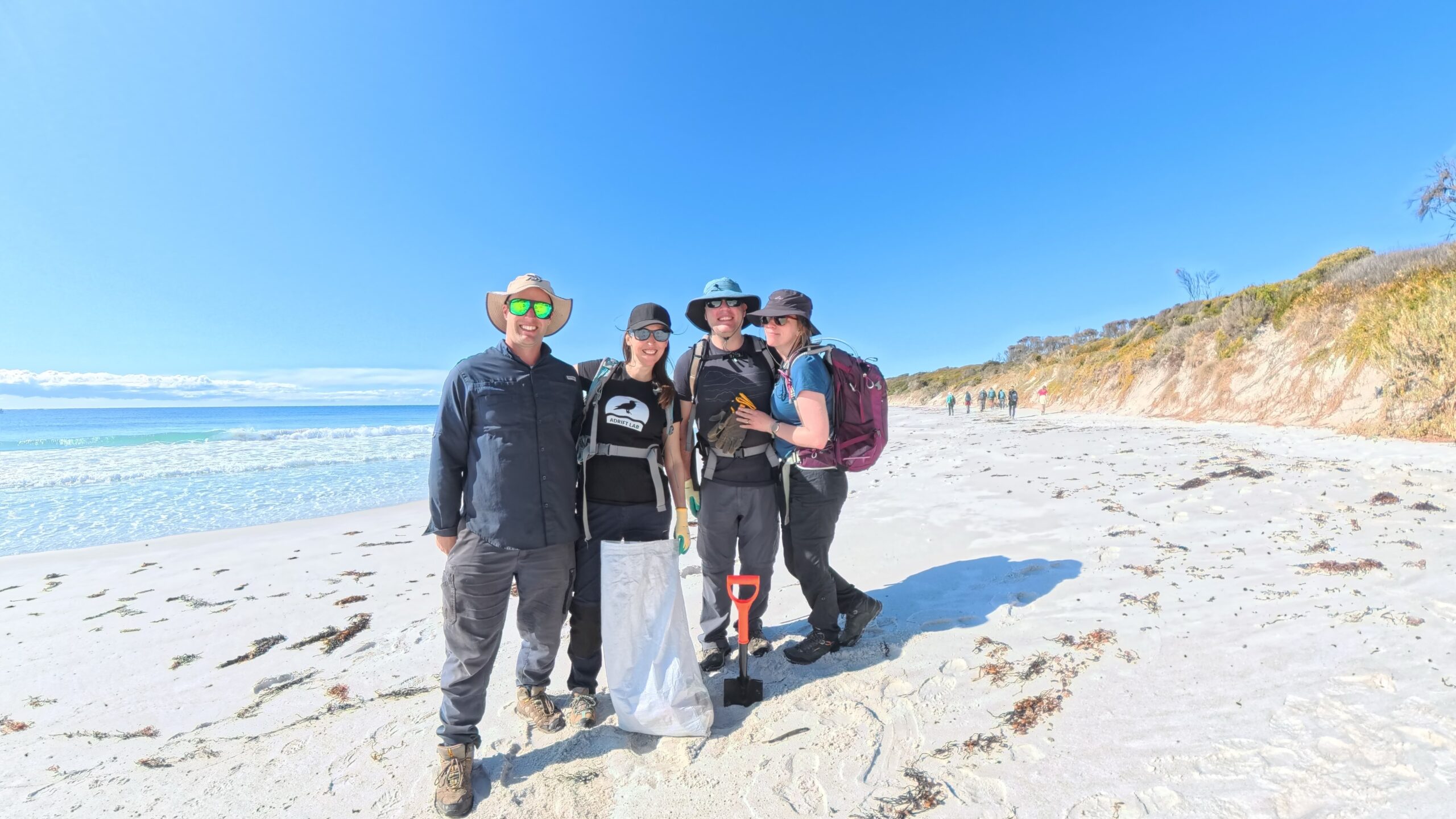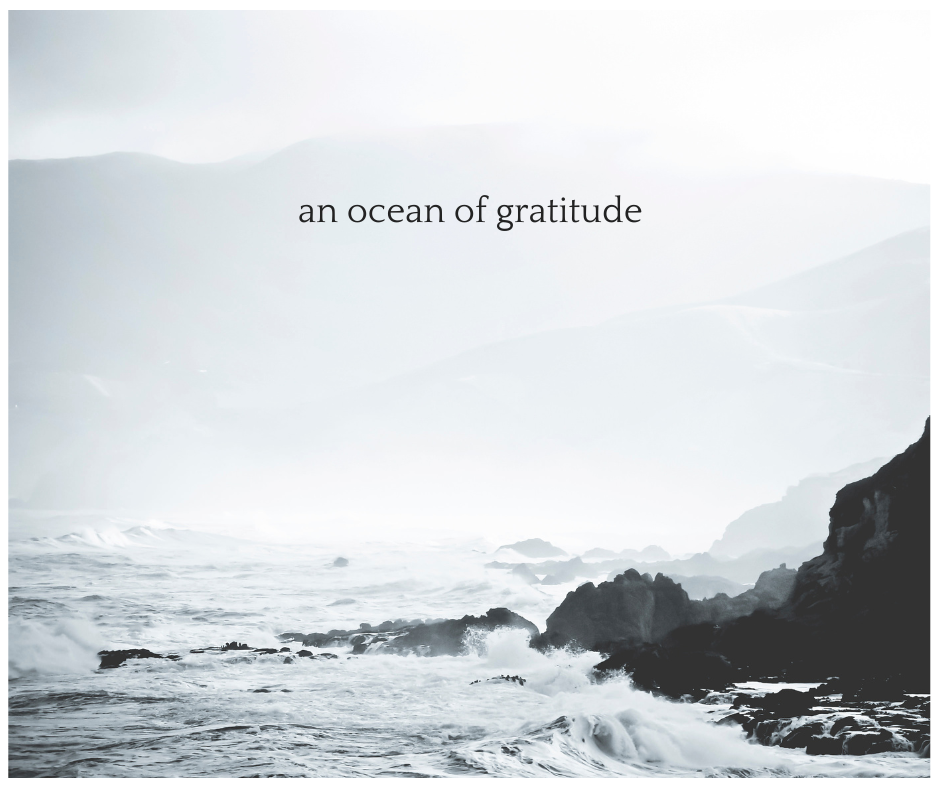Reporting seabird mortalities to Adrift Lab
Please note we have a new, formalised way to report beached birds and mass mortality events. Please submit your observations here now.
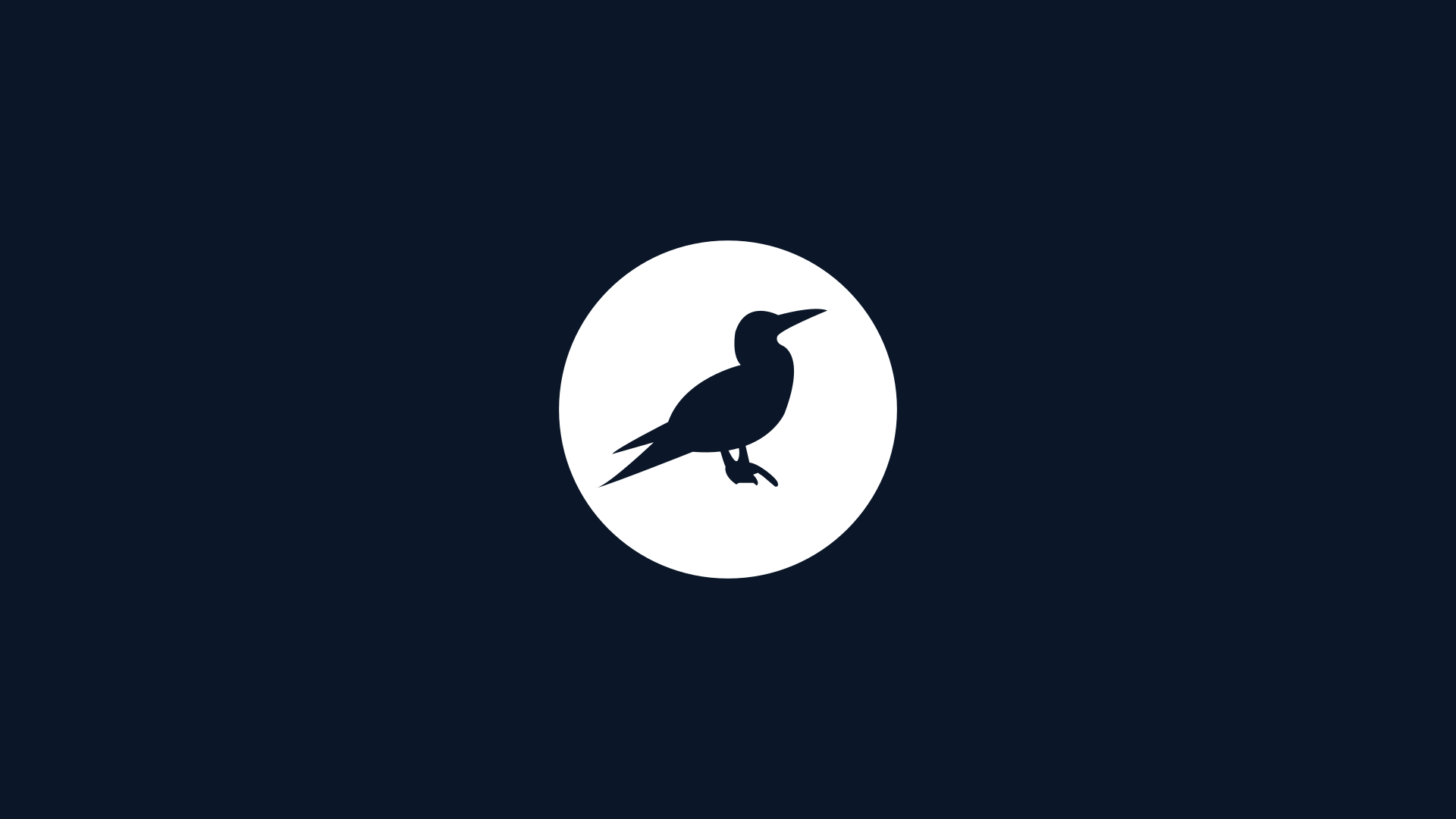
Starting in Oct/Nov (and often continuing until May), seabirds sometimes begin washing up dead/dying on beaches along Australia’s east coast. The death of 100s or 1000s of seabirds at one time is referred to as a #MassMortality or #wreck event. In Australia, the main species caught up in these events is usually the Short-tailed Shearwater (or ‘muttonbird’), though other species can also be involved (while ID is not required as our team will do this for you, we’ve provided a brief guide below for those who are interested).
WHAT CAN YOU DO?
– Take a photo of the scene and individual bird (photo should include the beak/feet)
– Record how far you walked (estimates are fine)
– Note how many people (we need this to calculate search effort)
– Record the total number of dead/dying birds you observe
Our Adrift Lab team has written about this issue in the past, and made a number of important recommendations about what data to record, and how. The paper is titled “A proposed framework for reporting mass mortality (wreck) events of seabirds” and you can read the abstract here.
WHERE TO SEND YOUR PHOTOS AND DATA?
- Upload your photos and data here: https://adriftlab.org/beached-bird-reports/
- Questions? email us: adriftlab ‘at’ gmail.com
WHAT’S CAUSING THE BIRDS TO DIE?
We’re disappointed to see reputable organisations suggesting mass-mortality events are “normal” or “natural”. There is no evidence to support this. Nor are their deaths directly linked with the birds’ long-distance migration (which for the shearwaters, is typically completed >30 days before birds start washing up on beaches – and for Fairy Prions, they haven’t even migrated yet as these are juvenile birds). If migration really was the cause, we’d see 1000s of dead shearwaters on our beaches every year and countless other migratory species would be expected to behave in the same manner. Normalising these mortality events is dangerous. Seabirds are widely regarded as the marine equivalent of the “canary in the coal mine”; we should listen to what they’re telling us.
So, what’s causing the deaths?
Marine heatwaves: with climate change and ocean warming, marine heatwaves are becoming more common, especially off the east coast of Australia.
- South-east Australia marine heatwave forecast to be literally off the scale
- A monster eddy current is forming off Sydney. What is it, and will it bring a new marine heatwave?
In 2021 (link above), we wrote about this stating “Ocean temperatures are rising due to climate change, and extreme events such as marine heatwaves are increasing in frequency, subsequently influencing the abundances of marine predators and their prey. Marine heatwaves, along with a broad spectrum of additional threats, are causing many seabird populations to decline. Most of these threats are synergistic or cumulative, and virtually all are increasing in their frequencies and intensities. Although storms and strong winds may increase the likelihood of birds washing up, the cause is most likely related to a shortage of food reducing the bird’s condition. Anomalous oceanic conditions and climatic phenomenon, such as El Niño-Southern Oscillation (ENSO), have also been shown to impact seabird survival often resulting in wreck events. Seabird wrecks caused by environmental variables appear to have increased in frequency in some areas. Such events highlight the impact of environmental pressures that birds are facing globally, which are now exceeding the ability of many species to cope. Monitoring beach-washed seabirds, including those species that migrate, can provide insights into the spatial and temporal extent of wrecks and other anomalous events.”
Could the birds have died from avian flu (HPAI), as has been recorded in the Northern Hemisphere, South America and Antarctica over recent years? The answer to this is not straightforward. Hundreds of shearwaters, shorebirds, and ducks are tested in Australia each year, but we must continue to take precautions. A wealth of avian flu resources have been developed to help the community understand the potential risks to themselves, their pets, and wildlife. We refer you to Dr Michelle Wille: her website is an excellent source of information and real-time updates ➡️ https://www.michellewille.com/avian-influenza-resources/
🛑Please do NOT TOUCH ANY BEACH WASHED BIRDS OR MAMMALS. Instead, take photos and upload your data/observations to our beached-bird database (so we can monitor the numbers and locations🛑 ➡️ https://adriftlab.org/beached-bird-reports/
ADDITIONAL INFORMATION:
Identification of seabirds commonly found during Australian wreck events
Most common species is the Short-tailed Shearwater (or ‘muttonbird’). This species breeds primarily in Tasmania, with smaller numbers in VIC and southern NSW. These birds are medium-sized (roughly the size of a Silver Gull) with a slender grey-black beak and greyish feet.
Further north (especially around Sydney and Brisbane), we sometimes see beach-washed Flesh-footed Shearwaters. These birds are slightly larger with a distinctive beak: it’s white with a black tip.
Also in the north, we occasionally receive records of Wedge-tailed Shearwaters. These birds are the smallest of the bunch, their black beak is delicate and they have pink feet (note: Flesh-foots also have pink feet).
You’ll note that these 3 species have a lot in common: they all have grey-black feathers, two have pink feet, and two have a slender, grey-black beak. This makes ID difficult, so when taking photos, please do your best to document the colour of the feet & beak (without actually touching the bird though).
To enable correct identification by the Adrift Lab team, we ask that you take extra care with your photos. Ideally, take photos of every bird you encounter on the beach. In each photo, ensure the beak shape and colour of the feet is visible.
